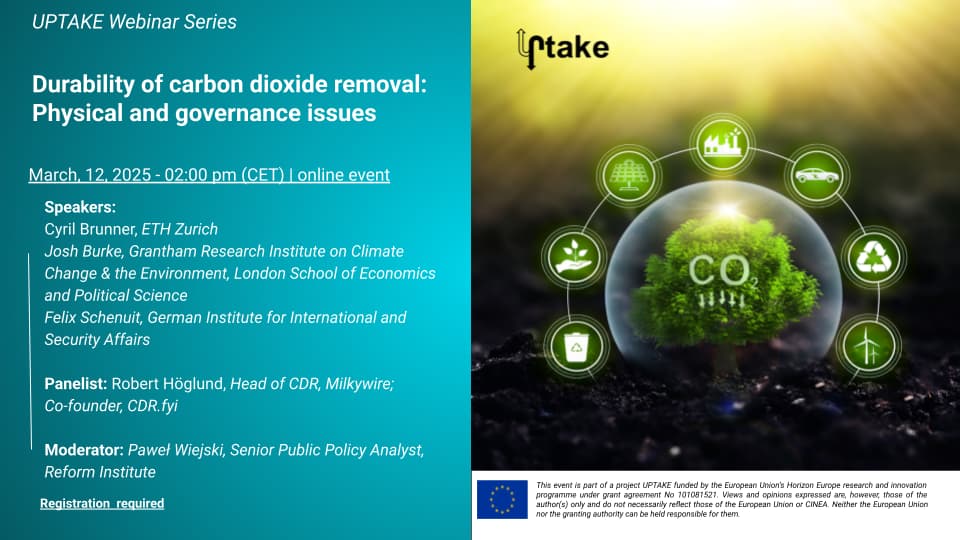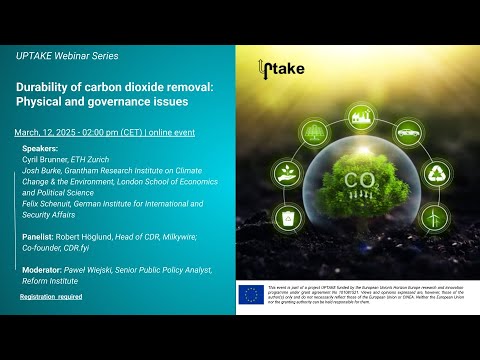Durability of Carbon Dioxide Removal: Physical and Governance Issues
The next webinar of the recently launched series on the latest published papers on carbon dioxide removal (CDR) research will focus two papers.
![]() Speakers:
Speakers:
Dr. Cyril Brunner, ETH Zurich, “Durability of carbon dioxide removal is critical for Paris climate goals”
Dr. Felix Schenuit, Stiftung Wissenschaft und Politik and Josh Burke, LSE, ‘Conditional fungibility: sequencing permanent removals into emissions trading systems’
![]() Panelist: Robert Höglund, Head of CDR, Milkywire; Co-founder, CDR.fyi
Panelist: Robert Höglund, Head of CDR, Milkywire; Co-founder, CDR.fyi
![]() Moderator: Paweł Wiejski, Senior Public Policy Analyst, Reform Institute
Moderator: Paweł Wiejski, Senior Public Policy Analyst, Reform Institute
![]() 12 March 2025, 2 pm - 3 pm I ZOOM, online
12 March 2025, 2 pm - 3 pm I ZOOM, online
Register in advance ![]() here.
here.
![]() The webinar format will consist of a 20-minute presentation and a 10-minute discussion with an invited expert stakeholder, followed by a 30-minute open discussion (1 hour total).
The webinar format will consist of a 20-minute presentation and a 10-minute discussion with an invited expert stakeholder, followed by a 30-minute open discussion (1 hour total).

